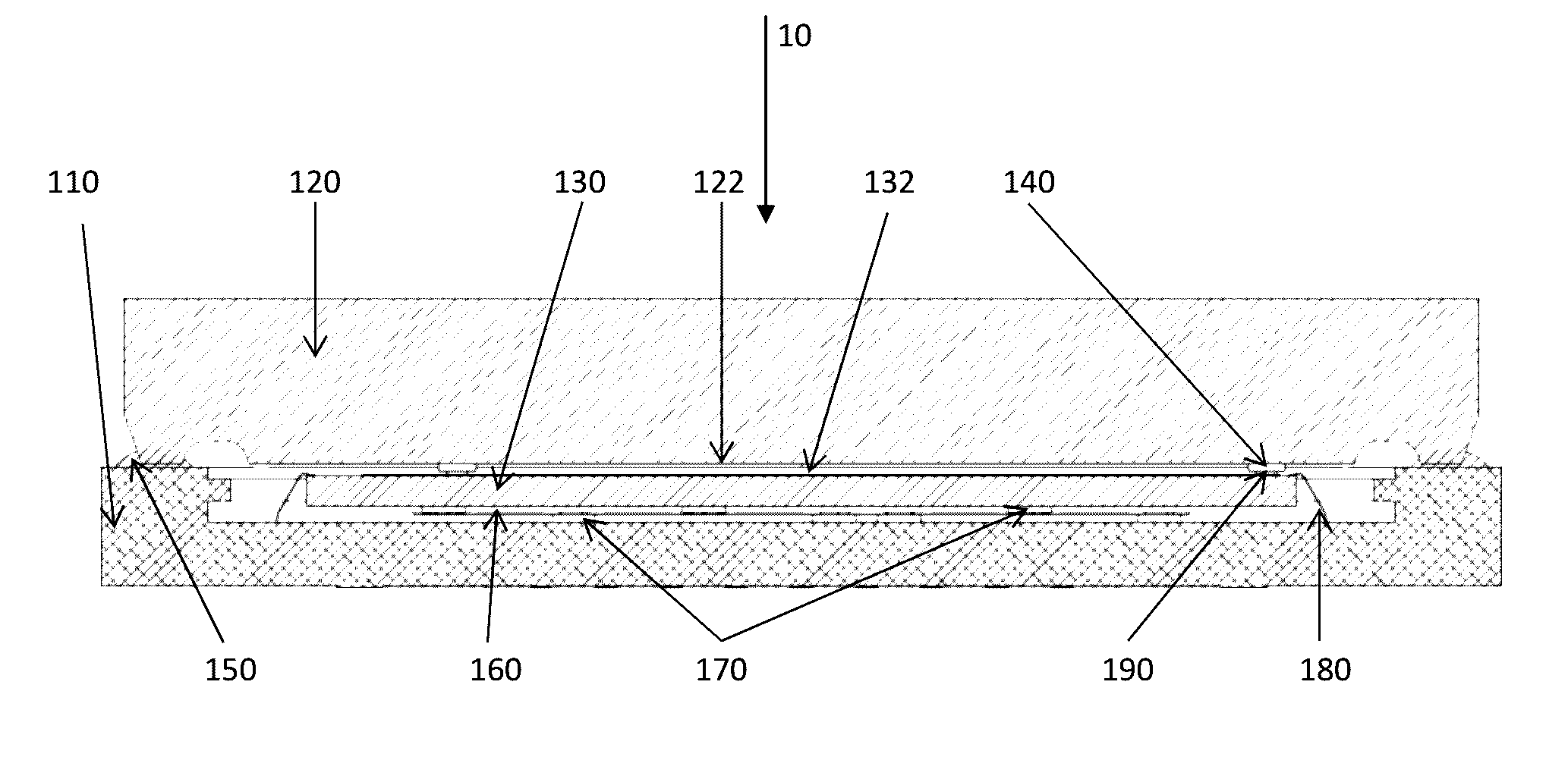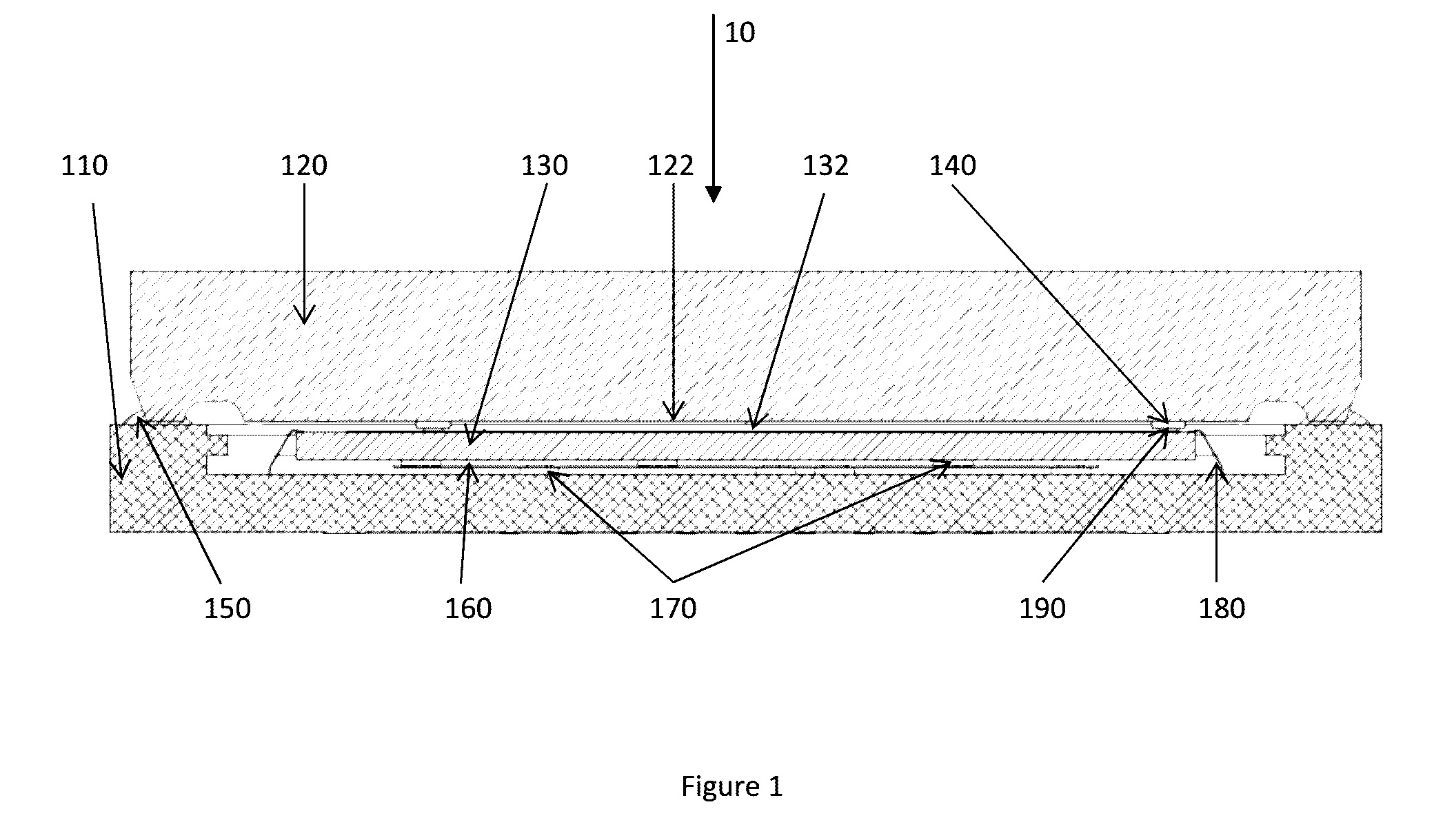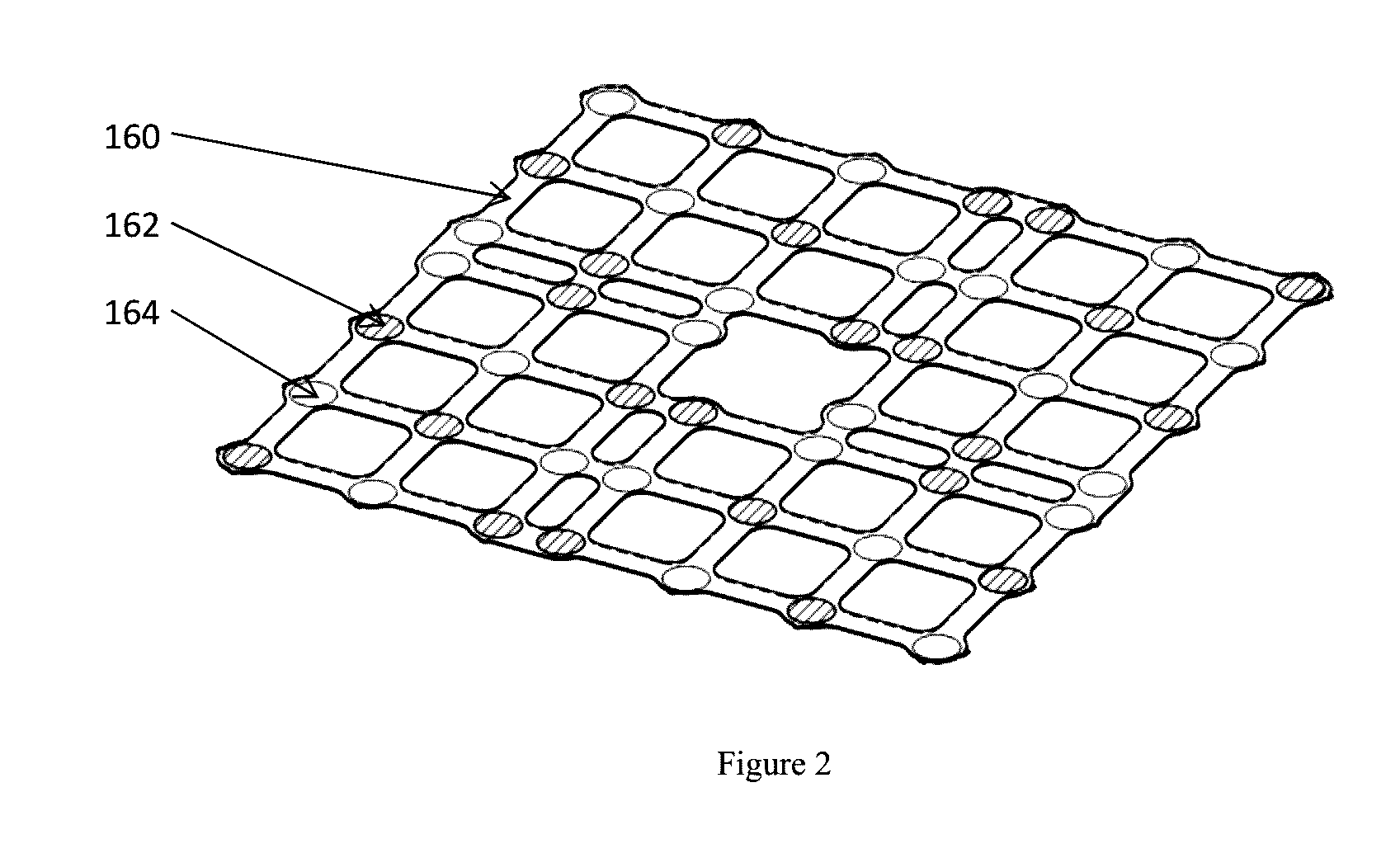Image intensifier with indexed compliant anode assembly
an image intensifier and compliant technology, applied in the direction of discharge tube main electrodes, photo-emissive cathodes, tubes with screens, etc., can solve the problems of affecting the performance of image intensifiers, and raising production costs for these components, so as to achieve high performance, low cost, and high performance.
- Summary
- Abstract
- Description
- Claims
- Application Information
AI Technical Summary
Benefits of technology
Problems solved by technology
Method used
Image
Examples
Embodiment Construction
[0034]FIG. 1 shows a cross-sectional view of an EBAPS image intensifier incorporating an exemplary embodiment of the invention. The vacuum package assembly (110) is typically based on a hermetic, multi-layer, high temperature co-fired ceramic package fabricated via conventional means. As shown in FIG. 1, the ceramic package employs a ceramic design protected under the claims of U.S. Pat. No. 6,837,766. As detailed in U.S. Pat. 6,837,766 B2, the non-monotonically varying inner ceramic side wall of the vacuum package increases the high voltage stand-off potential of the wall and therefore improves sensor yield. U.S. Pat 6,837,766 B2 is incorporated by reference. The vacuum package (110) assembly is sealed to a photocathode assembly (120) by means of a sealing material (150) in order to complete a vacuum envelope. The vacuum envelope encloses an anode assembly (130). The photo-emissive portion of the photocathode assembly resides on the inner surface of the assembly (122) facing the el...
PUM
 Login to View More
Login to View More Abstract
Description
Claims
Application Information
 Login to View More
Login to View More - R&D
- Intellectual Property
- Life Sciences
- Materials
- Tech Scout
- Unparalleled Data Quality
- Higher Quality Content
- 60% Fewer Hallucinations
Browse by: Latest US Patents, China's latest patents, Technical Efficacy Thesaurus, Application Domain, Technology Topic, Popular Technical Reports.
© 2025 PatSnap. All rights reserved.Legal|Privacy policy|Modern Slavery Act Transparency Statement|Sitemap|About US| Contact US: help@patsnap.com



